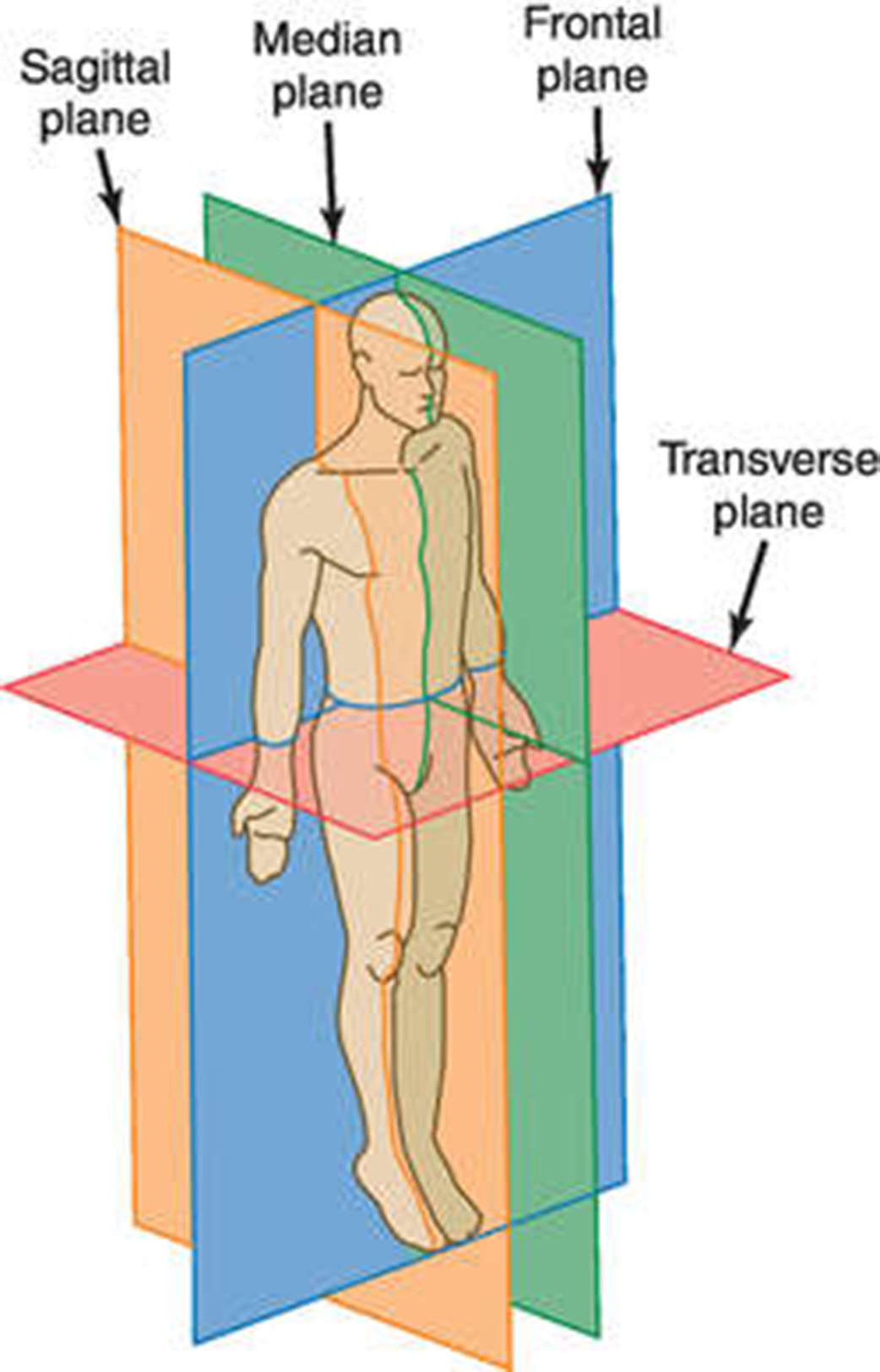When learning anatomy it is important to know directional terms in order to help understand the position of a structure relative to another. Most directional terms can be grouped into pairs that have an opposite meaning Ie. anterior (front) and posterior (back).
It is also a good idea to understand the planes of the body which are imaginary flat surfaces running through the body. Below is a chart explaining directional terms followed by a chart explaining body planes.
Directional Terms
| Directional Term | Definition | Usage Example |
|---|---|---|
| Superior (Cephalic, Cranial) | Toward the head or upper part of the structure | Your knee is superior to your ankle. |
| Inferior | Away from the head or the lower part of the structure | Your elbow is inferior to your shoulder. |
| Anterior | Nearer to or at the front of the body | Your sternum is anterior to your heart. |
| Posterior | Nearer to or at the back of the body | Your esophagus is posterior to the trachea. (windpipe) |
| Medial | Nearer to the midline | Your ulna is medial to your radius. |
| Lateral | Further from the midline | Your lungs are lateral to your heart. |
| Intermediate | Between two structures | Your transverse colon is intermediate between the ascending and descending colons. |
| Ipsilateral | On the same side of the body as another structure | Your gallbladder and ascending colon are ipsilateral. |
| Contralateral | On the opposite side of the body from another structure | Your ascending and descending colons are contralateral. |
| Proximal | Nearer to the attachment of a limb towards the trunk. Near to the origin of a structure. | Your humerus is proximal to your radius. |
| Distal | Further from the attachment of a limb from the trunk. Farther from the origin of a structure. | Your phalanges are distal to your carpals. |
| Superficial (external) | Toward or on the surface of the body | Your ribs are superficial to your lungs. |
| Deep (internal) | Away from the surface of the body | Your ribs are deep to the skin of your chest and back. |
Body Planes
- Sagittal Plane – the vertical plane that divides the body or organ into left and right sides. (Not necessarily at the center line of the body)
- Midsagittal/Median plane – When a plane passes through the midline of the body or organ and divides it into equal left and right sides
- Frontal/Coronal plane – Divides the body or organ into anterior (front) and posterior (back)
- Transverse/Horizontal plane – Divides the body into superior (upper) and inferior (lower) portions.
- Oblique plane – An oblique plane passes through the body or organ at an angle.
